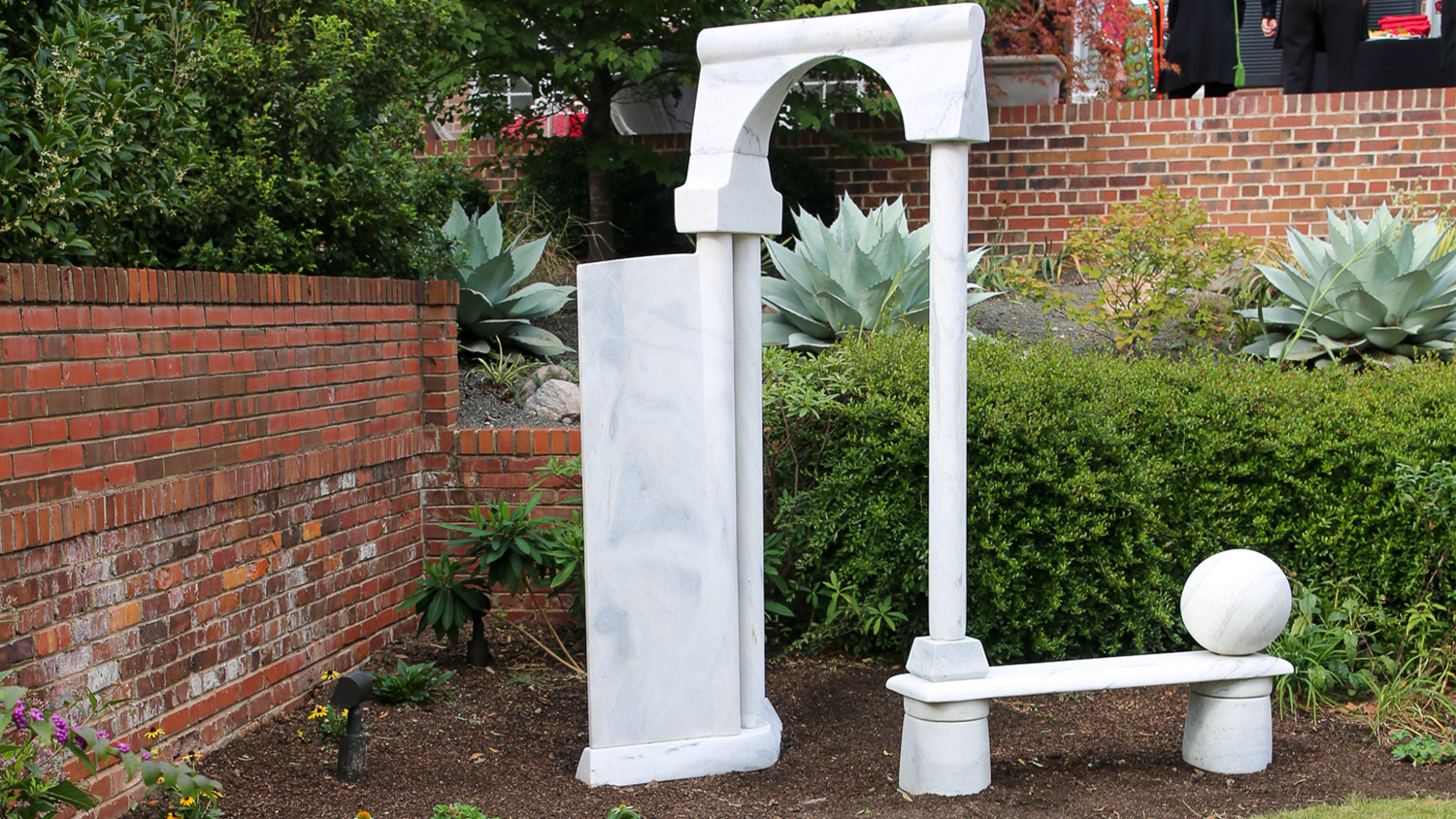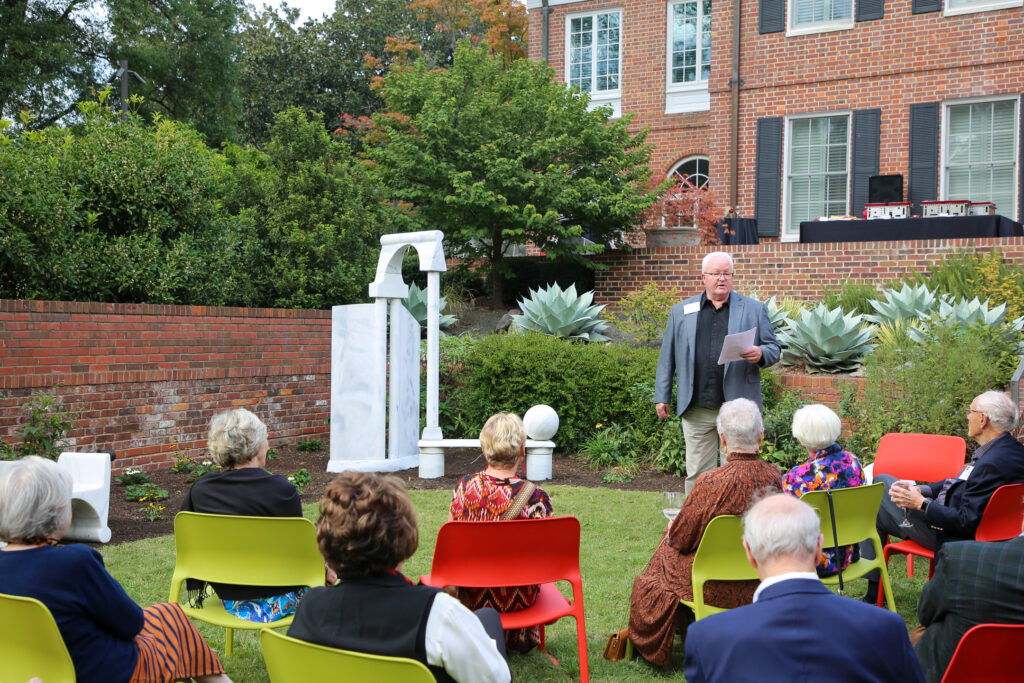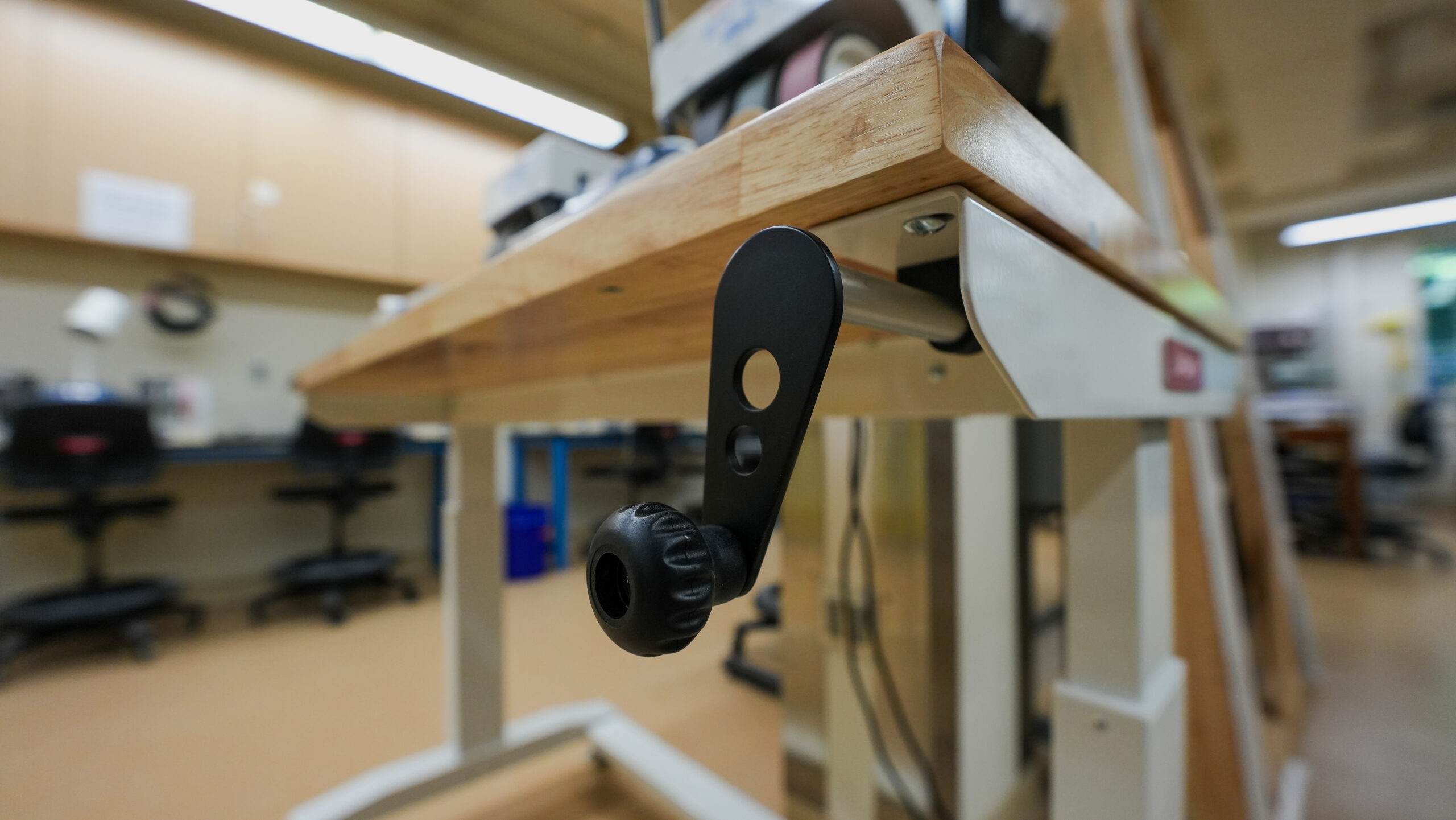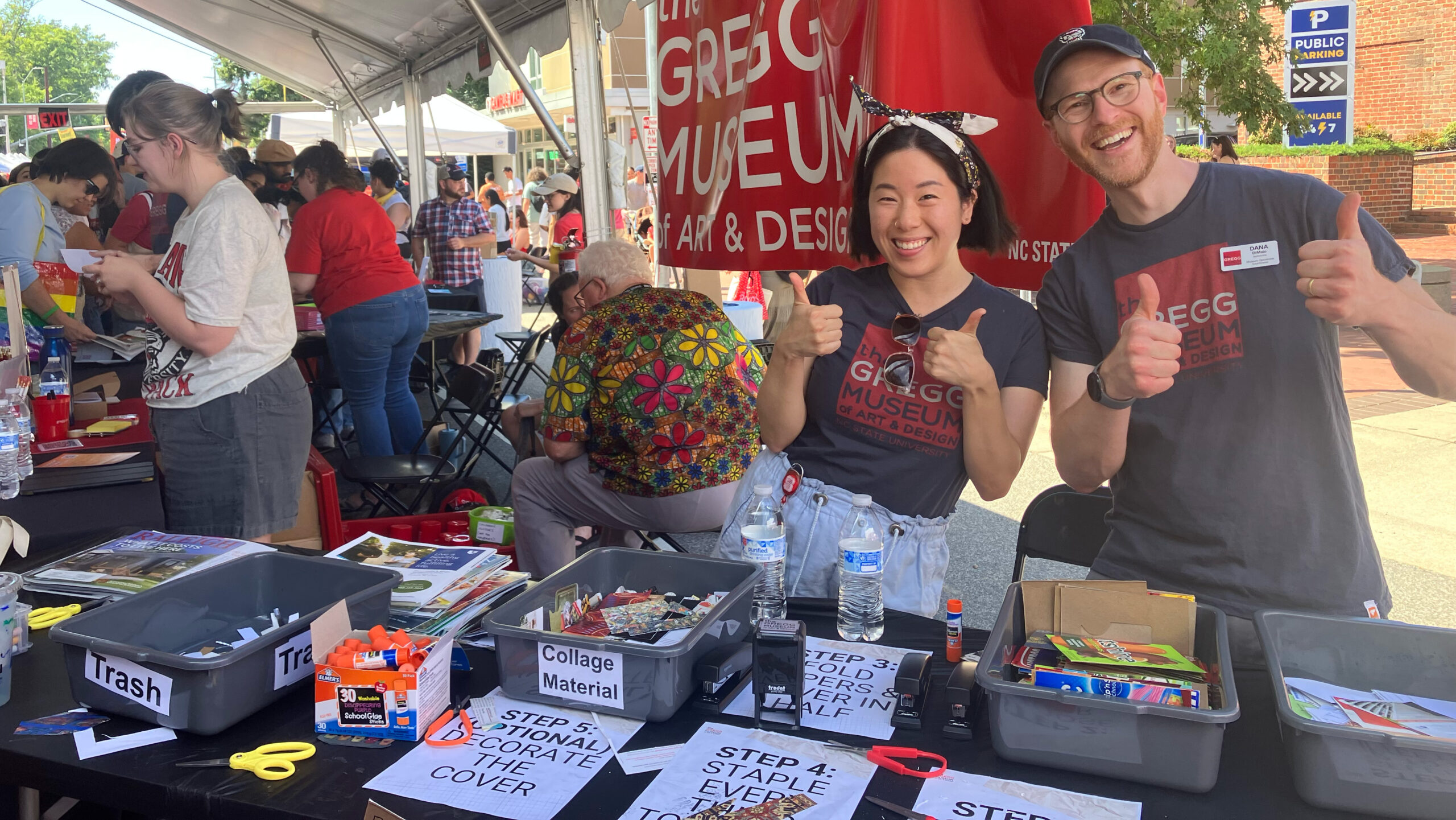Restored Marble Sculpture Graces the Gregg Museum’s Garden
The artwork stood in the JC Raulston Arboretum for two decades prior to its restoration and reinstallation on the grounds of NC State’s campus art museum.

Artwork and artist history provided by Roger Manley
It’s not every day that a fine art museum extends an open invitation to take a seat on an artwork — but now is your chance. The Gregg Museum of Art & Design‘s recently installed Italian Reflections welcomes visitors to sit, strike a pose, snap a selfie or just rest and smell the flowers. The marble architectonic sculpture is nestled at the edge of the perennial border in the Museum’s Rose Jackson and Evelyn Thiem Formal Garden honoring two of NC State’s most brilliant enhancers of landscapes: horticulturist James Chester “J.C.” Raulston and artist Horace Farlowe.
Raulston was founder of the NC State University Arboretum that now bears his name. In 1992, the American Association of Botanical Gardens and Arboreta named it the best arboretum in the country. Now, with more than 100,000 living specimens, it is regarded as one of the world’s finest collections of living plants. Sadly, Raulston did not live to see it achieve this status because he was killed in an automobile accident on Dec. 21, 1996.
A committee charged with raising the funding to acquire a work of art as a memorial to Raulston’s life soon arranged to purchase the marble assemblage Italian Reflections by sculptor Horace Farlowe. Once installed and dedicated, it stood in the arboretum for two decades. In 2016 it was removed to make room for more plants and then was transferred to the Gregg Museum.
After a lengthy process of planning, followed by a thorough restoration by Raleigh sculptor Paris Alexander (made still longer by delays caused by the COVID-19 pandemic), it has been reinstalled in the Gregg Museum’s Rose Jackson and Evelyn Thiem Formal Garden. When the Gregg Museum was raising funds for their historic building renovation, Jerry (’64) and Nina Jackson made a generous gift to name the garden in memory of their mothers. Now with this sculpture addition, the pollinator garden, designed by professor Anne Spafford and NC State horticulture students, also serves as a place to honor Raulston’s legacy.

The Wade and Kathy Reece Gregg Museum Fund, established by Wade (’78) and Kathy Reece, supported the restoration of Italian Reflections and ultimately the cost of installation in its beautiful new home. The intersection of this sculpture’s revival and arrival in the garden is a testament to private support’s influence on the museum’s collection and grounds.
“We could hardly be more delighted,” said Gregg Museum Director Roger Manley, “since this work of art celebrates so many aspects of the university’s legacy at once, while at the same time we think it will be something that will encourage visitors to explore the landscaping around the museum as well as what’s on view inside. One of the essential purposes of art in the first place is connecting people — and this piece quietly connects people with nature, history, art, the museum and each other. We are so grateful to the Reeces, the Jacksons, the Arboretum and everyone else who made this possible.”
About the Artist
Horace Farlowe was born on Feb. 26, 1933, in Robbins, N.C., only 20 miles southeast of Asheboro. Enthralled by art from an early age, as soon as he was old enough to be admitted, he enrolled at Appalachian State Teachers College (now Appalachian State University) in Boone, intending to major in art. However, after completing only the first semester of his freshman year and before he could take a single art course, he was drafted into the Marines and sent to fight in Korea.
After his return home in 1957, he applied to the architecture program at NC State’s School (now College) of Design. “My first studies in art,” he later wrote, “were in a school of architecture. This introduction to art was responsible for many years of research trying to create sculpture that is a reflection of me and not an obvious influence by others. Now I find forms related to architecture and the space that architecture defines is of primary importance to me.” With components that link an arch, column, doors and places to sit, Italian Reflections is a fine illustration of this approach.
Finishing his studies at NC State in 1961, Farlowe immediately enrolled at Atlantic Christian College in Wilson (now Barton College) to pursue a second bachelor’s degree under the tutelage of painter Russell Arnold (1900-1976). Arnold introduced him to the work of Willem de Kooning, Hans Hoffman and Richard Diebenkorn, but when Farlowe encountered the work of Romanian sculptor Constantin Brancusi he realized his true calling.
As soon as he completed a B.S. in painting, he headed to East Carolina College (now East Carolina University) in Greenville to earn an MFA in sculpture, finishing in 1964. In 1979, after serving several years as one of the pioneer participants in the North Carolina Arts Council’s great (but now discontinued) Visiting Artist Program, and after teaching art at several other academic institutions, Farlowe was asked to establish and direct a stone sculpture program at the University of Georgia (UGA), a position he held until his retirement as professor emeritus in 2000.
Students who studied with him during his decades at UGA’s Lamar Dodd School of Art often recalled his strongly held belief that energetic daily physical work at the task of carving stone was essential to learning the basic craft skills that made the art possible. They also recalled the infectious joy and sheer excitement he shared with his students on trips to Italy and Greece to visit quarries, ruins, museums and monuments.
Despite the demands of teaching studio art courses, Farlowe maintained a vigorous schedule completing commissions for monumental sculptures that now enhance sites in Spain, The Netherlands, Italy, Germany, Scotland and public institutions throughout the United States. The largest are as tall as 17 feet and weigh more than 50 tons. In North Carolina, his work can be seen at Elon University, the NC Zoological Park in Asheboro, the Cumberland County Public Library in Fayetteville, the Mint Museum of Art in Charlotte, the Hanes Collection and R.J. Reynolds Industries in Winston-Salem, and the North Carolina Museum of Art in Raleigh. Two major pieces are installed at the Grounds for Sculpture outdoor museum in Hamilton, New Jersey.
Farlowe died at the age of 73 on April 8, 2006, at Duke University Medical Center in Durham, N.C., from complications following a heart attack. “Horace was a consummate master at marble carving, with an international reputation,” according to fellow UGA art professor Jack Kehoe. “He initiated a renaissance in stone carving in this country.”


